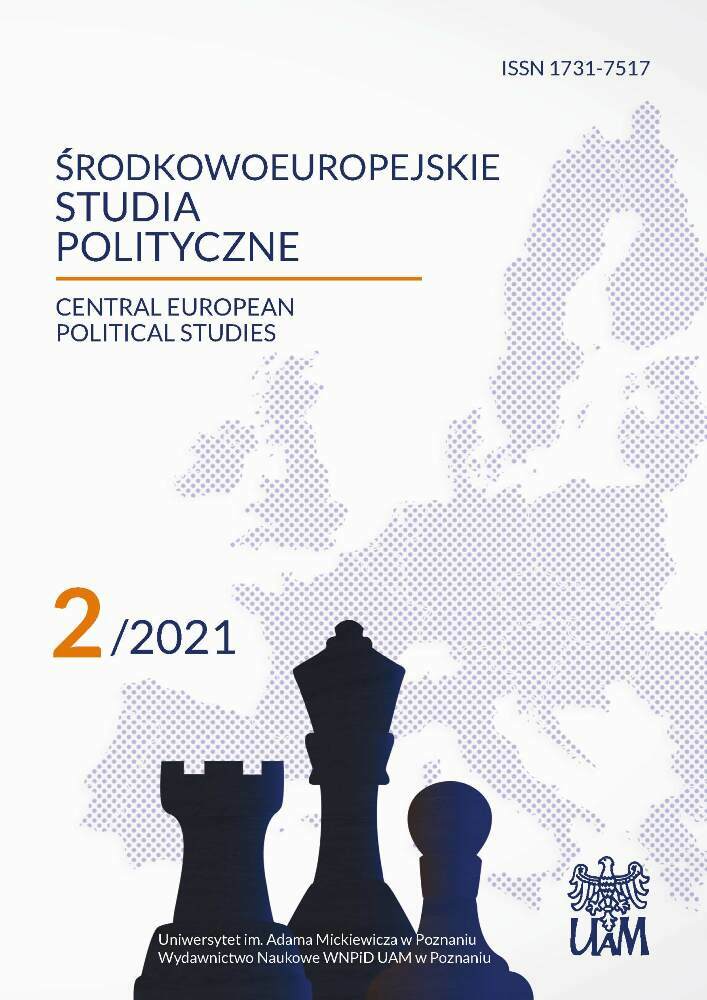Abstract
The purpose of this article is to understand how the blurry nature of hybrid warfare and hybrid peace influences the assessment of national security and the making of adequate foreign and security policy decisions, including, in particular, the prediction of the further course and resolution of the Russian-Ukrainian conflict, which is not only a threat to Ukraine’s existence but also to European security in general. In order to properly study this issue, the Russo-Ukrainian war on the Donbas was selected as an object. As the main method of the research of this problem was chosen the conflict analysis. The conclusions drawn from this analysis prompt us to differentiate the concepts of war, peace, and conflict and bring our perceptions of them to reality. When the idea of internal conflict replaces the real war, their sophisticated substitution will leave the problem of settlement of the conflict on the Donbas not solved, and the war between Ukraine and Russia is not completed.
Achieving peace by “settlement the conflict on the Donbas” within the framework of a real war of Russia against Ukraine will not lead to its end and sustainable peace. In such a situation, only a temporary “cold peace” is possible. The implementation of the strategy of Ukraine and the international community should begin with the rejection of the “plot for settlement the internal conflict on the Donbas” and the recognition of the reality of the war, in which the belligerent and aggressor is Russia, but not Phantoms DPR/LPR.
The study’s objectives are based on identifying epistemological reasons that make it impossible to resolve the Russian-Ukrainian conflict in Donbas and clarify their national and international security consequences. The study results are based on an analysis of the course of the Russian-Ukrainian war and the process of settling the conflict in Donbas. The article analyzes the mechanism of interaction between hybrid war and hybrid peace in the Russian-Ukrainian conflict in Donbas, clarifies the essence of war and peace under existing realities, and identifies epistemological reasons that make it impossible to resolve the Russian-Ukrainian conflict in Donbas. The article also analyses the real and probable national and international consequences of the unresolved problem of war and peace in the Russian-Ukrainian conflict on Donbas.
The article concludes with a proposal for a possible solution to war and peace on Donbas. Recommendations for resolving the Russian-Ukrainian conflict in Donbas are based on Ukraine and the international community’s rejection of the “plot for settlement the internal conflict in Donbas” and recognition of the reality of a war in which the warring party and the aggressor are Russia, but not the phantom DNR/LNR. According to these recommendations, military force should become the main instrument for coercion of Russia for forcing peace and ending the war on acceptable terms for Ukraine. Ukrainian diplomacy must act under the task of war, but not only so much for the sake of “settlement internal conflict on the Donbas.”
References
Conflict in World Politics: advances in the Study of Crisis, War and Peace (1998), eds. F. P. Harvey, B. D. Mor, New York.
Cvitova hybridna woyna: Ukrainians front (2017), ed. V. P. Gorbulyn, Hаrkiv.
Doroshkevich А. С. (2015), Hybridna voyna v informaciynom cecpilystvi, Vicnik Nacionalynogo univercitetu “Uyridichna academiy imeni Yaroslava Mudrogo”. Сеriya: filosofia, filosofia prava, politologia, coziologia, no. 2 (22), Harkiv.
Herpen M. H. Van (2014), Wojni Putina. Chechnya. Gruziya. Ukraina: nezacvoeni uroki minulogo, Hаrkiv.
Hybressia Putina. Nevoennie acpekti voyn novogo pokolenia (2016), Kyiv.
Malley R. (2019), 10 Conflicts to Watch in 2020, “Foreign Policy”, 26.12.2019, https://foreignpolicy.com/2019/12/26/10-conflicts-to-watch-2020/.
Morgenthau H. I. (1967), Politics among Nations, New York.
Magda Y. В. (2015), Hybridna voyna: vijiti i peremogti, Hаrkiv.
Obraschenie Prezidenta Rossiyskoy Federacii (2014), Vladivir Putin vistupil v Kremle pered deputatami Gosudarstvennoy Dumi, chlenami Coveta Federacii, rukovodielyami regionov Rossii i predstavitelyamy grajdanskogo obcshestva, 18.03.2014, https://kremlin.ru/events/president/news/20603, 22.01.2020.
Perepelytsia H. М. (2003), Conflicti v postcomunistichiy Evrope, Кyiv.
Perepelytsia H. М. (2015), Ukraine – Russia: woyna v umovax cpivisnuvannya, Кyiv.
Perepelytsia H. М. (2019), Vikliki dlya zovnishnyoi politiky presidenta Ukraine Vladimira Zelenskogo, in: Ukraine Diplomatichna, eds. A. Denisenko, V. Denisenko, I. Homencka, Кyiv.
Sidorevko S. (2019), Persha normandska: yk ta u chomu Zelemskiy peremig Putina na Sammity v Pariji, “Yevropeyska pravda”, 10.12.2019, https://www.eurointegration.com.ua/articles/2019/12/10/7104052/, 22.01.2020.
Slaboshpitskiy М. (2015), Velyika woyna 2014...: Ukraine: vikliki, podii, materiali, Кyiv.
Ukraine and Russia: devjtiy val chi kitayska stina (2015), eds. V. P. Gorbulyn, О. S. Vlacuk, S. В. Kononenko, Кyiv.
Wójcik Ł. (2014), Ukraińska wojna hybrydowa. Wojna typu zgaduj-zgadula, “Polityka”, 13.05.2014, http://www.polityka.pl/tygodnikpolityka/swiat/1579805,1,ukrainska-wojna-hybrydowa.read.
License
Copyright (c) 2021 Hryhorii Perepelytsia

This work is licensed under a Creative Commons Attribution 4.0 International License.

